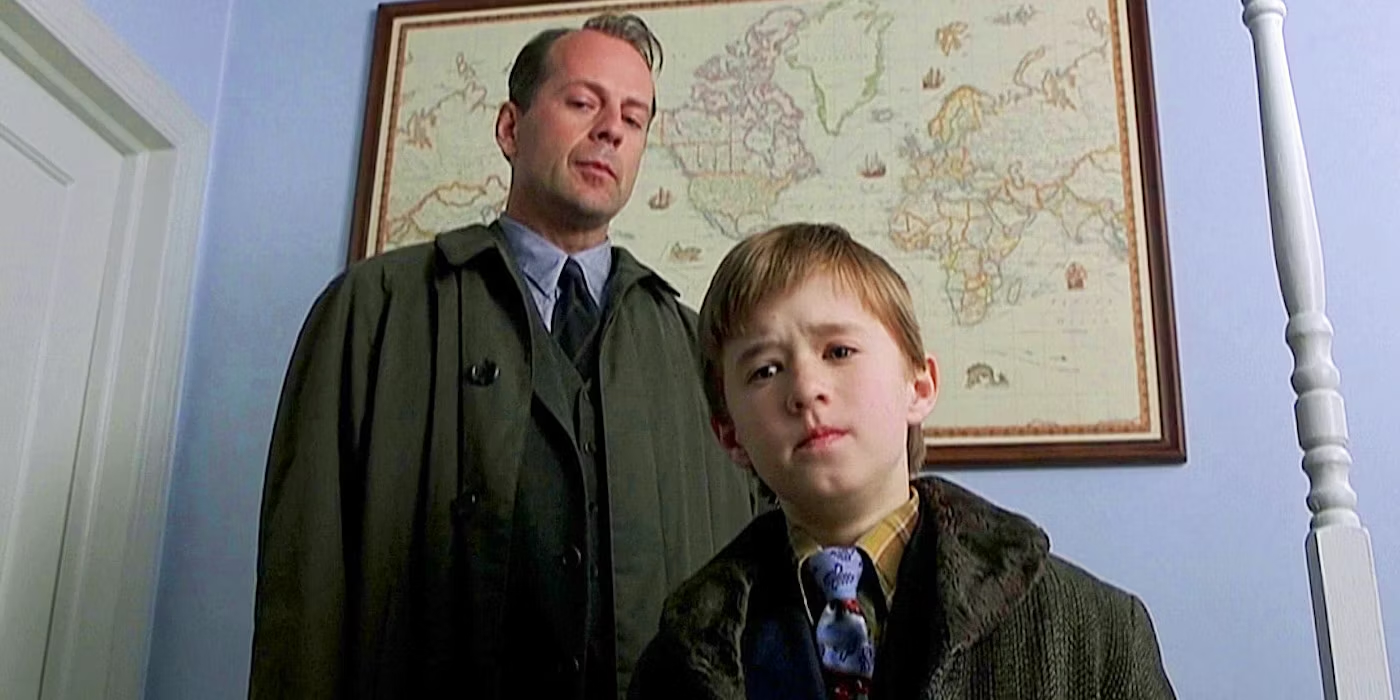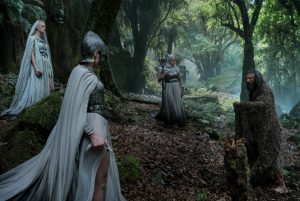
When one thinks of the great sounds in M. Night Shyamalan’s breakout movie, The Sixth Sense, iconic lines probably leap to mind. And none stand out more than the confession scene, in which young Cole Sear (Haley Joel Osment) agrees to tell child psychologist Malcolm Crowe (Bruce Willis) his secret.
“I see dead people,” Cole explains, laying out the rules of the afterlife for the audience and for Malcolm, who doesn’t realize that the boy’s describing him.
It’s a powerful moment, one that deserves to stand the test of time. But it relies upon more than just the dialogue. The scene also works because of the score by James Newton Howard, and more specifically his unique sound design done with editor Michael Kirchberger. Howard works human voices and breaths into the score to represent the spirits’ presence around Cole, making the movie scarier and more profound. It in a microcosm represents the genius at play in The Sixth Sense’s soundscape.
The Sounds of Secrets
Like most of The Sixth Sense, the “I see dead people” scene is a master class in cinematic construction. It begins with Malcolm walking into Cole’s hospital room where the boy is convalescing after a violent encounter with a ghost at a birthday party. Malcolm deploys one of his psychiatrist tricks to engage the sullen Cole, trying and failing to tell a bedtime story.
But he breaks from the game and finds himself getting honest, more honest than he expected. Malcolm finds himself sharing the weight of his failing of Vincent Gray (Donnie Wahlberg), the young man who returned and shot him at the start of the film, and the separation he feels in his marriage.
Malcolm’s honesty prompts Cole to share his secret, and Shyamalan underscores the importance of the moment with sound design. There’s no score leading up to Cole’s revelation. In fact, the sound mix is so dry that we can hear the smack of lips and intake of breath as Malcolm and Cole talk.
That breath is the key aspect throughout, which Kirchberger retains when he pushes Osment’s whispered lines and Willis’s resigned readings deep into the mix. We hear every exhale, every gasp as the two wrestle with the amount of information they’ll give one another, considering the stakes of the human connection they may make.
The score stays silent through Malcolm’s story, leaving space for the inhales and exhales. After Cole says, “I want to tell you my secret now,” the score waits a beat as Malcolm takes in the information, slowly rising as the dead man agrees to listen.
The accompaniment to Cole’s confession is mostly made up of strings that are by turns mournful and hopeful. A lovely motif consisting of rising notes falling gently back down creeps into the mix. This motif can be heard throughout the film, whenever indicators of Malcolm’s death pop up. It enters here when the shot reverses from Cole to Malcolm, watching but not fully understanding the boy.
However, the most powerful sound occurs just before Cole says that he sees dead people. What at first sounds like male singers harmonizing reveals itself to be moaning, human voices suffering, expressing their anguish through indecipherable vocalizations.
In that moment, we don’t just start to see the dead people who haunt Cole. We hear them as well.
Humanity in the Horror
Howard and Kirchberger use human breaths, sighs, and everyday noises of life throughout the film to signal the spirits of the dead interacting with the real world. After Malcolm breaks the window outside his wife Anna’s (Olivia Williams) shop, long deep breathing mixes with the blowing wind and chattering outside. Malcolm’s failed reach for the bill at his anniversary dinner with Anna gets a sting of a sharp breath intake. When Malcolm translates the Latin he hears Cole speaking, the moaning rises up in the score.
Each of these choices underscores the central horror of The Sixth Sense. At no point are we viewers alone with the characters, even when we only see one person on the screen. The breaths, moans, and other human sounds remind us of other figures constantly nearby, their suffering melding into our experiences, even if we can’t acknowledge or even understand it.
In that way, we share Cole’s predicament. We’re constantly bombarded with suffering that we cannot fully understand or process. The constant calls for help add sorrow to the scares, a sort of memento mori that won’t let us forget about our own death.
These effective scares speak to Shyamalan’s pulpy heart. But he takes it further by using the sounds to create pathos. The central conflict in The Sixth Sense involves people who don’t know how to connect with others. Disillusioned by his failure with Vincent, and separated from Anna, Malcolm sees working with Cole as his salvation. Cole is too scared of the dead people to understand what they want from him. The two find peace when they learn how to connect, Cole by helping the dead people and Malcolm by talking to Anna as she sleeps.
Thus the human sounds in the design remind viewers of the people all around us, people who could connect with us. The film doesn’t deny that it’s scary to have so many others longing to be with us. Like Cole, we don’t always want to deal with these others, or even know how to deal with it. But they’re present all the same, and the movie remains confident of the connections that can be made.
Learning to Listen
After a triumphant turn as the lead in the school play, Cole’s excitement snaps at the sight of three hanged people in the hallway.
“I don’t see anything,” Malcolm admits, kneeling down to get on Cole’s level.
“If you’re real still, sometimes you feel it inside, like you’re falling down real fast, but you’re really just standing still,” Cole explains, connecting the presence of ghosts to the “tiny hairs on the back of your neck.”
Throughout the conversation, the moaning comes back into the score, reminding the listener of human suffering. But even though Malcolm cannot see the spirits himself, and in fact repeatedly asks Cole if he’s sure they’re there, he’s listening and engaged. When Cole asks Malcolm to make it stop, he replies with assuredness, “I’m working on it.”
Twenty-five years since its release, The Sixth Sense is recognized as a horror classic, thanks to scare scenes so well crafted that most people don’t even recognize aspects like the human voices. But the movie endures because of its themes of human connection, a deeper theme that resonates with anyone willing to listen.
The post The Sixth Sense: The Brilliant Horror of M. Night Shyamalan’s Sound Design appeared first on Den of Geek.





